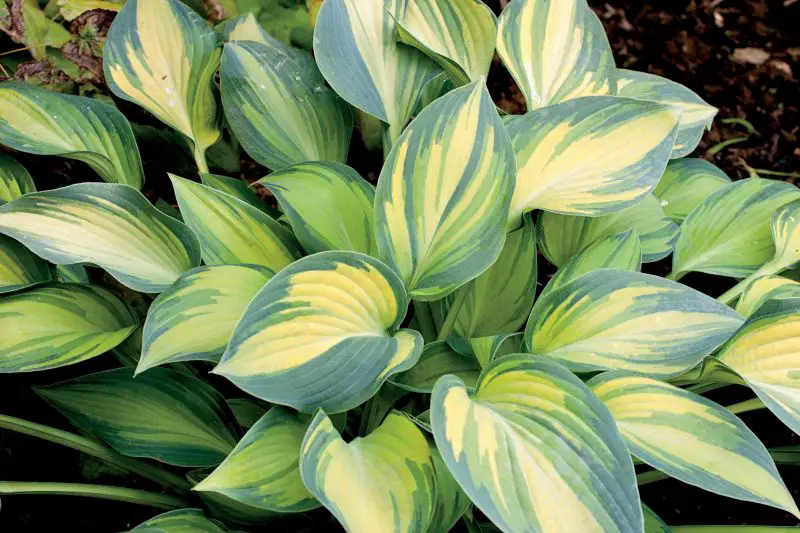How To Care For Hostas In The Fall?
How to care for hostas in the fall?. Optimally fertilize and maintain hostas.
Provided that proper care and attention is paid to the location, Hostas can grow for many years in the same place and develop into beautiful symmetrical pollen.
In addition to proper fertilization, the location, which can range from full sun to full shade depending on the variety and soil in which the Hosta grows, is of great importance.
Location
All too often it is thought that Hosta’s are full shade plants.
A rather small part of the large assortment still thrives in full shade. Hosta sieboldiana, Hosta Montana and their many varieties, in particular, are again doing well in the darkness.
Many Hosta Tardiana types (= Hosta sieboldiana ‘Elegans’ x Hosta tardiflora) also give satisfactory results in the shade.
However, the vast majority of the range thrives best in semi-shade.
Also, there is a small range that thrives in full sun without burning (e.g. Hosta June, Hosta Paradise Joyce, Hosta June Fever, etc.).
Soil
Hostas develop optimally in relatively heavy soils with high humus content.
The hummus provides a good structure (airiness) and well-developed soil life.
A good soil structure, in combination with sufficient fertilizer and the correct location, promotes the development of a sound root system.
This results in a more beautiful and healthier above-ground part of the plant.
In practice, this means an excellent potting soil based on peat, compost and clay for pot culture. The latter makes the soil mixture a bit heavier and retains water and nutrients better. When planting in the garden, richly digested compost is mixed with the garden soil.
The massive planting hole is filled with this mixture.
On sandy soils, the compost ensures better retention of water and nutrients.
The compost provides a better structure and soil life on heavy clay and loam soils.
Bentonite (clay flour) can also be added on very light sandy soils to increase humidity.
On the other hand, sand can be added on heavy clay soils.
Fertilization
Hostas like organic fertilizers.
A harmonic fertilizer for Hostas is an organic mixture with an NPK ratio of approximately 14 + 10 + 8 enriched with trace elements. Also, adding a little Kieserite is suitable for more intense leaf colour.
The first fertilization must be done in March and then repeated every six weeks until mid-August.
It is necessary to start with the application of organic fertilizers as early as the soil life must first convert part of the fertilizer into nutrients that the plant can absorb.
From the end of June, it is better to use a fertilizer with a lower nitrogen content (N value between 5 and 8) because the leaf mass has already been formed and the plant is now concentrating on flowering and root growth.
An excellent organic fertilizer for Hostas to use in the spring is Guano.
Guano is a natural fertilizer, namely the dried droppings of fish-eating birds, which is mainly extracted in Peru.
In addition to a high nitrogen content, which is required for explosive leaf development in the spring, Guano also contains many necessary trace elements.
Synthetic fertilizers are generally not recommended.
They have an unfavourable influence on soil life and contain fewer trace elements.
They can be used when one is late with the start of organic fertilizers. But even then it is also recommended to use an organic fertilizer at the same time, which the plant can use a few weeks later.
Water
In addition to a correct location, good soil and adapted fertilizer, Hosta’s need sufficient water.
It is a myth that Hostas can withstand drought.
When a Hosta becomes dry in full growth, at first sight, nothing is wrong. However, the plant suffers underground and further development stops. Severe damage can then occur, even to the extent that the Hosta will become a lot smaller the following season.
Also, in pot culture, one must ensure that the soil remains permanently well moist.
During the summer period, a Hosta may be wet for a long time.
In the open ground, care must be taken that a Hosta that has to be in the same place for a long time does not have too much root competition Gets from surrounding trees and shrubs.
In the first instance, this leads to stagnation of growth and later to the decline or even disappearance of the Hosta.
Hostas in pots must be repotted regularly for their unrestrained development. February-March is the best period for that. The root balls are still easy to handle, and the roots can immediately start using the fresh nutrients.
If you follow the above recommendations, you are guaranteed to have beautiful Hostas!

